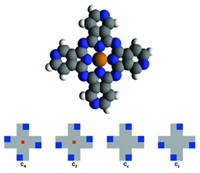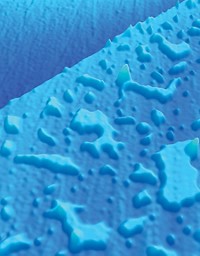Advertisement
Grab your lab coat. Let's get started
Welcome!
Welcome!
Create an account below to get 6 C&EN articles per month, receive newsletters and more - all free.
It seems this is your first time logging in online. Please enter the following information to continue.
As an ACS member you automatically get access to this site. All we need is few more details to create your reading experience.
Not you? Sign in with a different account.
Not you? Sign in with a different account.
ERROR 1
ERROR 1
ERROR 2
ERROR 2
ERROR 2
ERROR 2
ERROR 2
Password and Confirm password must match.
If you have an ACS member number, please enter it here so we can link this account to your membership. (optional)
ERROR 2
ACS values your privacy. By submitting your information, you are gaining access to C&EN and subscribing to our weekly newsletter. We use the information you provide to make your reading experience better, and we will never sell your data to third party members.
Materials
Nanocrystalline Diamond
August 11, 2008
| A version of this story appeared in
Volume 86, Issue 32
John Angus presumes in his letter that the nanocrystalline diamond used in our work (Cryst. Growth Des. 2007, 7, 2298) contained up to 10% sp2 carbon in the grain boundaries and concludes that the source of the conductivity in our diamond samples was due to grain boundary material and not doping by hydrogen (C&EN, March 10, page 9). Actually, we reported that surface conductivity was detectable only on the diamond samples terminated with hydrogen, thus excluding that the effect was due to sp2 carbon.
To further explore the conductivity in diamond, we hydrogenated a natural diamond cube and applied platinum electrodes at its two opposite sides. Using an ohmmeter, we obtained in-air resistances on the order of 1 MΩ. After application of an equatorial belt of Baysilone paste, a highly insulating sticky material, we repeated the measurement by applying the electrodes at the same sides of the diamond cube (i.e., the paste-free sides normal to the belt). Although the diamond cube had an edge length of 5 mm, we observed resistances on the same order and even smaller ones. Because of the electrically insulating belt interrupting the water layer on the diamond surface, we can only assume that in the present scenario, the conductivity on it cannot be understood on the basis of the transfer doping model (Science 2007, 318, 1424), which requires a superficial water layer on the hydrogenated site as a prerequisite.
Andrei P. Sommer, Dan Zhu
Ulm, Germany
Horst-Dieter Försterling
Marburg, Germany
Correction
July 21, page 57: High school students who won Bayer’s recent environmental film festival were identified incorrectly in this photo. They are the ones wearing sunglasses: Benjamin Swanson (from left), Dylan Morris, Ben Kepner, and Andrew Benton.





Join the conversation
Contact the reporter
Submit a Letter to the Editor for publication
Engage with us on Twitter